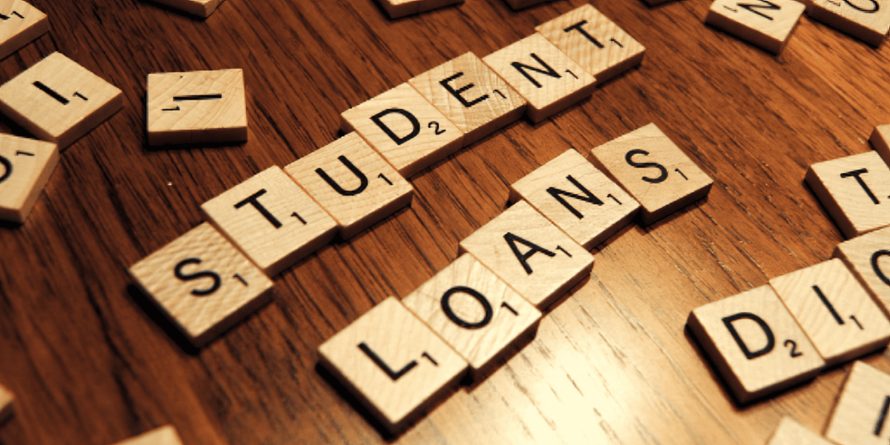Recent University graduates have enough to deal with as they try to enter the workforce. Lack of experience in their new field, starting out in a new city or town and low starting wages in many professions are bad enough, but with the average student now graduating with an average of $33,000 in loans is just too much for many young people today.
Student-loan have been ballooning for years and have now overtaken credit card dept as the second-largest source of consumer debt.
Once you graduate, or don’t graduate, you have to start repaying your debts immediately, even if you are not able to find a job using your new-found credentials.
There are some plans that President Obama has pushed for to put off the financial albatross.
Deferment is an option for those who have financial problems such as losing their job, student loan refinancing can help lower your payments initially, eventually the someone has to pay the piper…but does it have to be you?
The Consumer Financial Protection Bureau announced last year that people who are working for a public service employer “may be eligible for existing student loan repayment benefits.” That is great news for the 25% of the population that falls into this category.
When you consider the numbers involved, you can save $1000 of dollars in forgiveness, cancellations or discharges with just a few hours of research and form filing, it might be the most productive activity that young graduate can engage in.
The federal loan program families
The first thing you should know is that Student loan forgiveness programs focus on federal student loans — including Direct Loans, Perkins Loans and Federal Family Education Loan (FFEL) Program loans. But if you have opted for a private loan, there is no dedicated program to deal with those. Also, some forgiveness programs apply only to Direct loans and others only to Perkins loans.
There is a reference chart made available from the U.S. Department of Education that provides information on all of the conditions that affect cancellations of loans and covers all types of federal loans. This chart will also give you appropriate links to the applications that must be completed. Here are the basics:
You can receive 100 percent forgiveness for student loans on Direct Loan, FFEL program and Perkins loans under one of the following conditions:
- Total or permanent disability or death (also referred to as discharge rather than forgiveness)
- Bankruptcy (though only in rare cases)
- School of attendance closing before graduation
- False certification of loan by school
Teacher forgiveness
The best way to qualify for student loan forgiveness is to find a job as a teacher for a nonprofit organization or in the public service sector.
Full-time teachers who have worked for five consecutive years with a designated elementary or secondary school or educational service agency that services low-income families can qualify for up to $5,000 of their total outstanding loan amount after they complete their fifth year of teaching. This amount grows to up to $17,500 for elementary or secondary teachers for special needs students or secondary math and science teachers.
Holders of Perkins loans can receive up to 100 percent cancellation of their loans under very similar conditions. But the requirements also include teachers of infants, toddlers, children, or youth with disabilities and mathematics, science, foreign languages or bilingual education teachers.
The formula is simple:
- first and second years — 15 percent canceled per year
- third and fourth — 20 percent canceled per year
- fifth year — the final 30 percent
Public service employees
Public-service employees with Direct Loans, including PLUS loans, can also take advantage of forgiveness programs. If you have Perkins or FFEL loans, and work in the public sector, you can consolidate your loans in the Direct Loans program and then apply.
To qualify, you first need to work full-time with a federal, state or local government organization, or some not-for-profit organizations. Not-for-profit organizations that have been designated as tax-exempt by the IRS qualify and private not-for-profit employers can qualify if they serve the public interest and have no affiliate with labor unions or partisan politics.
To qualify you have to:
- Make 120 on-time, full, scheduled, monthly payments on your Direct Loans (starting October 1, 2007)
- Make the payments under a repayment plan that qualifies
- While working full-time at a qualifying public-service organization
To qualify you must fill out the employer certification form and send it to the federal loan servicing agency. Because you must make 120 monthly payments, it will take 10 years to qualify for the program, but after you make these payments, the remaining balance of the loan is completely forgiven and there is no maximum amount!
Employer Qualifies? Federal, State, Local Government Yes Non-Profit 501©(3) Yes Non-Profit in Public Services Maybe, see below.
It’s extremely important to take the time to research everything that you need to do it qualify for student loan forgiveness and take the steps that will qualify you for whatever program you intend to use. Many borrowers wrongfully believe that by simply becoming a teacher or working in the public sector, they will have their loans forgiven. This is just not the case. You must know which type of loan, employer and job qualifies you for the program.
Featured image credit: FLICKR
June 09, 2015
June 09, 2015



